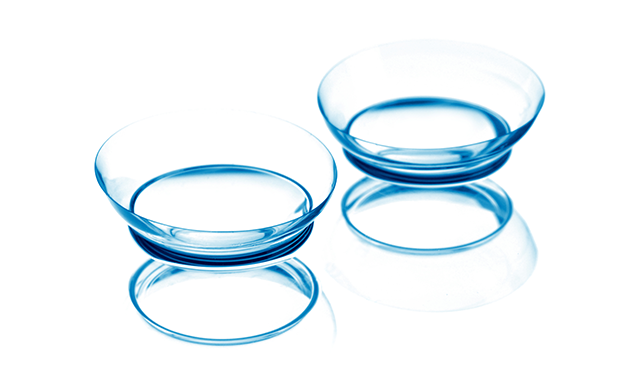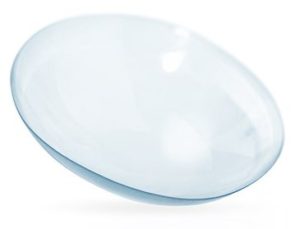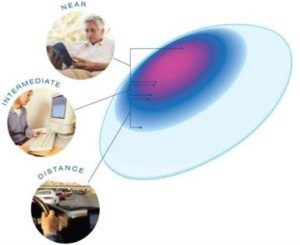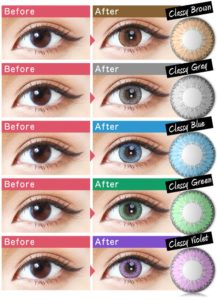
Request Appointment
You can request your next appointment with us online!
There are many reasons why you might prefer contact lenses to standard eyewear. This may include a glasses-free look, hassle-free vision correction, wearing non-prescription sun-wear spectacles and goggles, or the convenience of not having to worry about misplacing your glasses. If you have a high prescription or astigmatism, contact lenses may provide more enhanced vision correction than glasses. Today, you can even replace your bifocal glasses with bifocal contact lenses.
The first step to getting your contacts is to schedule an appointment for contact lens exam. After your this exam, our doctor will give you a copy of your contact lens prescription; and our optician will give you options on how to order your contacts. If you’re already have a current contact lens prescription, please send it to us or bring it when you visit the office.
A contact lens exam includes both a comprehensive eye exam to check your overall eye health, your general vision prescription for glasses and then a contact lens consultation and measurement to determine the proper lens fit. If you’re interested in contacts — or you already wear them and want to have your contact lens prescription updated — make sure you say so when you schedule your appointment for a comprehensive eye exam. This will ensure your exam includes extra time for your optometrist or ophthalmologist to perform additional tests needed for a proper contact lens fitting or prescription update.
Our doctors will prescribe the best contact lenses for you based on a complete eye examination and a review of your visual needs and eyewear prescriptions for both work and play. Since most people can wear more than one type of lens, it’s important to know what the choices are and the advantages and disadvantages of each.
To learn more about contact lenses, schedule your contact lens exam today! To get started, Click HERE, or call us at 407-292-9812.
Contact lenses are more versatile than ever before. We already outlined some of the benefits of wearing contact lenses. The more you understand about your contact lenses — the more you can enjoy their benefits. Here are the most common types of contact lenses:

These lenses are comfortable to wear and must be replaced monthly, weekly or daily depending on the type you choose. Soft lenses are often recommended for sports because they fit closer to the eye and are more difficult to dislodge. They can provide correction for most prescriptions including astigmatism. Today, with the introduction of newer materials like silicone hydrogels, which allow more oxygen to the eye, patients find it easier than ever to wear soft lenses comfortably.
Soft contact lenses are the most commonly prescribed contact lenses. They can be used to correct various vision problems, including:
Soft contact lenses are comfortable and easier to adapt to than rigid gas permeable lenses. Soft contact lenses come in various types, such as:

Specialty contacts are lenses that are designed for patients who have corneal conditions or other eye situations for which conventional contacts aren’t suitable. Some people suffer from eye conditions, such as dry eye, which can make wearing conventional contact lenses difficult. Fortunately, there are various types of specialty contact lenses that can combat these issues and make it possible for these patients to enjoy clear vision without glasses. Here’s a short list of specialty contacts that we often prescribes in our office:
More than 37 million Americans wear contact lenses, yet many people are unfamiliar with RGP lenses. RGP contact lenses are made of a firm, durable plastic that transmits oxygen. They offer excellent eye health: because they don’t contain water like soft lenses do, they resist deposits and are less likely than soft contacts to harbor bacteria. Rigid gas-permeable lenses provide clear, crisp vision for people with most vision problems. These contact lenses might be helpful if you’ve tried soft contact lenses and have been unsatisfied with the results or if you have “dry eyes.”
If you’ve been told in the past that you cannot wear contact lenses because of an irregular cornea or other problems, you may want to get a second opinion and ask one of our eye doctors about scleral contact lenses. Scleral contacts are large-diameter gas permeable contact lenses specially designed to vault over the entire corneal surface and rest on the “white” of the eye (sclera). In doing so, scleral lenses functionally replace the irregular cornea with a perfectly smooth optical surface to correct vision problems caused by keratoconus and other corneal irregularities.
 Multifocal Contact Lenses
Multifocal Contact LensesMultifocal contact lenses are contact lenses with multiple prescriptions all in one lens. There is typically a prescription for very close objects: one prescription for normal objects viewed at a distance, and then prescriptions for intermediate distances. In both soft and RGP designs, multifocal lenses offer distance and near vision correction just like a pair of bifocal or progressive eyeglasses.
 Color Contact Lenses
Color Contact LensesEnhance your eye color or even change it completely. Colored contact lenses are fun and come in a variety of colors for both light and dark eyes. Prescription color contacts correct your myopia (nearsightedness), hyperopia (farsightedness) or astigmatism, as well as enhancing or completely changing your eye color. Plano color contacts are worn purely for cosmetic purposes to change your eye color and have no lens power for vision correction.
![]() Silicone hydrogels are soft contact lenses that have high oxygen permeability and are comparable to GP lenses. Silicone is the name of a group of flexible, plastic-like materials that contain silicon, carbon, oxygen and other chemicals. Silicone hydrogel lenses are soft lenses, but silicone also is used in the production of many rigid gas permeable contacts to improve oxygen permeability of the lenses.
Silicone hydrogels are soft contact lenses that have high oxygen permeability and are comparable to GP lenses. Silicone is the name of a group of flexible, plastic-like materials that contain silicon, carbon, oxygen and other chemicals. Silicone hydrogel lenses are soft lenses, but silicone also is used in the production of many rigid gas permeable contacts to improve oxygen permeability of the lenses.
Limbal contact lenses are another type of specialty lens that falls between rigid gas permeable lenses and scleral varieties in terms of their diameter. Their larger overall diameter helps to increase their stability on the surface of your eyes. They also offer minimal interference with the eyelids, which helps to ensure comfort and clarity of your vision.
These lenses are unique in that they are a combination of RGP and soft materials. The central portion of the lens is a rigid gas permeable lens with a surrounding soft “skirt.” The benefits of this lens are numerous. The soft “skirt” allows the patient very good comfort while the optics of the rigid lens provides good vision in most cases. For most people, the lenses are easy to handle and are easy to care for.
Orthokeratology (Ortho-k) Wouldn’t it be great if you could correct your eyesight and reduce your dependence on glasses or contact lenses— without having to undergo eye surgery? It might sound far-fetched, but it’s a reality for many people. It’s called orthokeratology, or ortho-k. It is possible to dramatically slow down the progressive tendency of myopia or nearsightedness? The answer is YES! As a person becomes more nearsighted, there is a point where the risk of retinal tears, retinal detachments, glaucoma, cataracts, and maculopathy increase. If a patient becomes severely nearsighted, some of those risks become alarmingly high. Much like orthodontics, Ortho-K corneal molds gently reshape the cornea while the patient sleeps. Upon awakening, the patient removes the molds (for the day) and is able to see without the aid of glasses. Due to the reshaping of the cornea and the refocusing of light on the retina, the eye slows down, and oftentimes stops, axial elongation which leads to progressive nearsightedness. In addition to helping slow down progressive nearsightedness, Ortho-K corneal molds can help patients with eyes too dry for traditional contact lens use. For patients that overwear their contact lenses, Ortho-K can be a much healthier alternative.
Prosthetic contact lenses are special lenses, they are used to cover the cornea when it has become cloudy or opaque. These special lenses are made to match both eyes for cosmetic purposes. Therefore, they improve the appearance of a disfigured eye.
The proper care of contact lenses requires solutions that clean, refresh and store the lenses. The first and most important purpose of any solution is to thoroughly disinfect your lenses. Most solutions also offer the added benefit of enhancing the comfort of contact lenses by removing protein deposits and helping the lenses retain moisture during wear. Not all solutions are compatible with all people or contact lenses, so be sure to use the solution and follow the care regimen specified by your Vision Source doctor.
Before you leave our office, our doctors and optician will give you instructions for use and care of your new contact lenses. The adjustment period for new contacts is different for each patient. It can take between 10 to 12 days to fully adjust to your lenses. Once you begin using the lenses on your own, watch for any side effects during the adjustment period and notify your doctor. We’re here to help you.
Regardless of the type of contact lenses you wear, a contact lens exam is the first step in fitting you with the right contact lenses. To get contacts with us, Click HERE to schedule an appointment, or call/text us at 407-292-9812 for an appointment.






